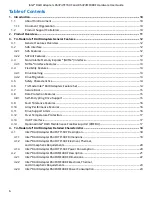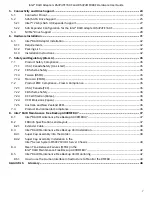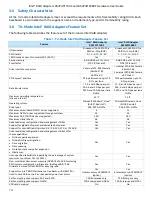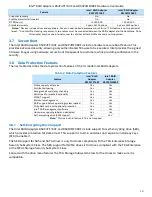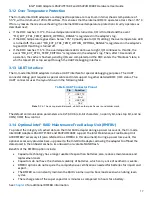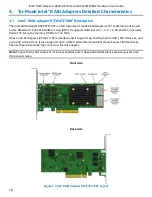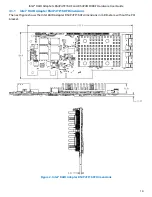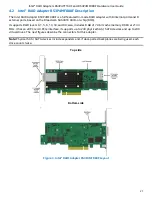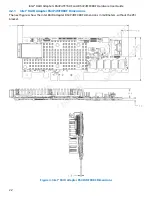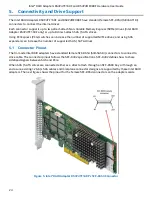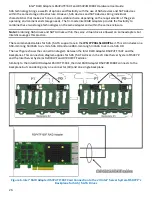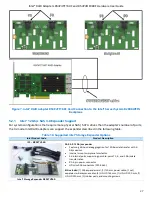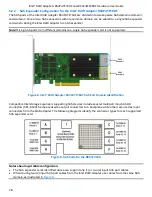
Intel® RAID Adapters RS3P4TF160F and RS3P4MF088F Hardware User Guide
13
3.3
Non-Volatile Memory Express* (NVMe*) interface
NVMe is a storage protocol created to accelerate the transfer of data with solid-state drives (SSDs) by using
multiple PCIe connections. Benefits are increased bandwidth (up to 8 Gb/s per lane), lower latency, increased
efficiency, lower CPU utilization with multiple long command queues, and lower power requirements.
The support for NVMe drives is automatic, the controller detects the drive type, there is no need to switch
profiles or IDs.
3.3.1
NVMe* Interface Features
The NVMe drive interface has the following characteristics.
•
Supports the following:
o
Data transfers of 16 Gb/s per lane (64 Gb/s when 4 PCIe lanes are being used).
o
PCI Bus Power Management Interface Specification
(revision 1.2).
o
Active state power management, states, by placing links in a power-saving mode during times
of no link activity.
•
Supports PCIe hot plug.
•
Supports error handling.
•
Provides high bandwidth per pin with low overhead and low latency.
•
Supports lane reversal and polarity inversion.
•
Two or four PCIe lanes per drive.
•
Common clock and SRIS drive support.
3.4
Flexibility Features
The tri-mode Intel RAID adapters have the next flexibility characteristics.
3.4.1
Drive Roaming
Drive roaming occurs when, once a VD is already set up, some or all the drives that are part of this VD are
manually changed to different ports on the same adapter. When this happens, the adapter detects the RAID
configuration from the configuration data on the drives.
Configuration data is saved in both the NVRAM on the RAID adapter and on the drives attached to the
adapter. This feature maintains the integrity of the data on each drive, even if the drives have changed their
physical device ID. More information on how to use the drive roaming feature can be found on the
Intel® RAID
Software User Guide for full featured and entry-level RAID controllers
.
3.4.2
Drive Migration
The tri-mode Intel RAID adapters allow to move one VD from one adapter to another, this is called drive
migration. In other words, drive migration is the transfer of a set of drives in an existing configuration from
one adapter to another. To achieve this, these conditions must be met:
1.
If the source and the destination RAID controllers do not belong to the same family generation, only
forward compatibility is allowed. Meaning, the destination RAID controller must be of the same family
as the source or newer.
2.
The destination RAID controller cannot have an existing RAID configuration.
3.
To keep migrated VD consistent (given that it was consistent before the migration), the VD must be
set to hidden before the migration.
More information on how to use the drive migration feature can be found on the
Intel® RAID Software User
Guide for full featured and entry-level RAID controllers
.






